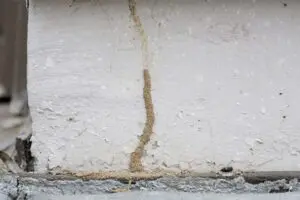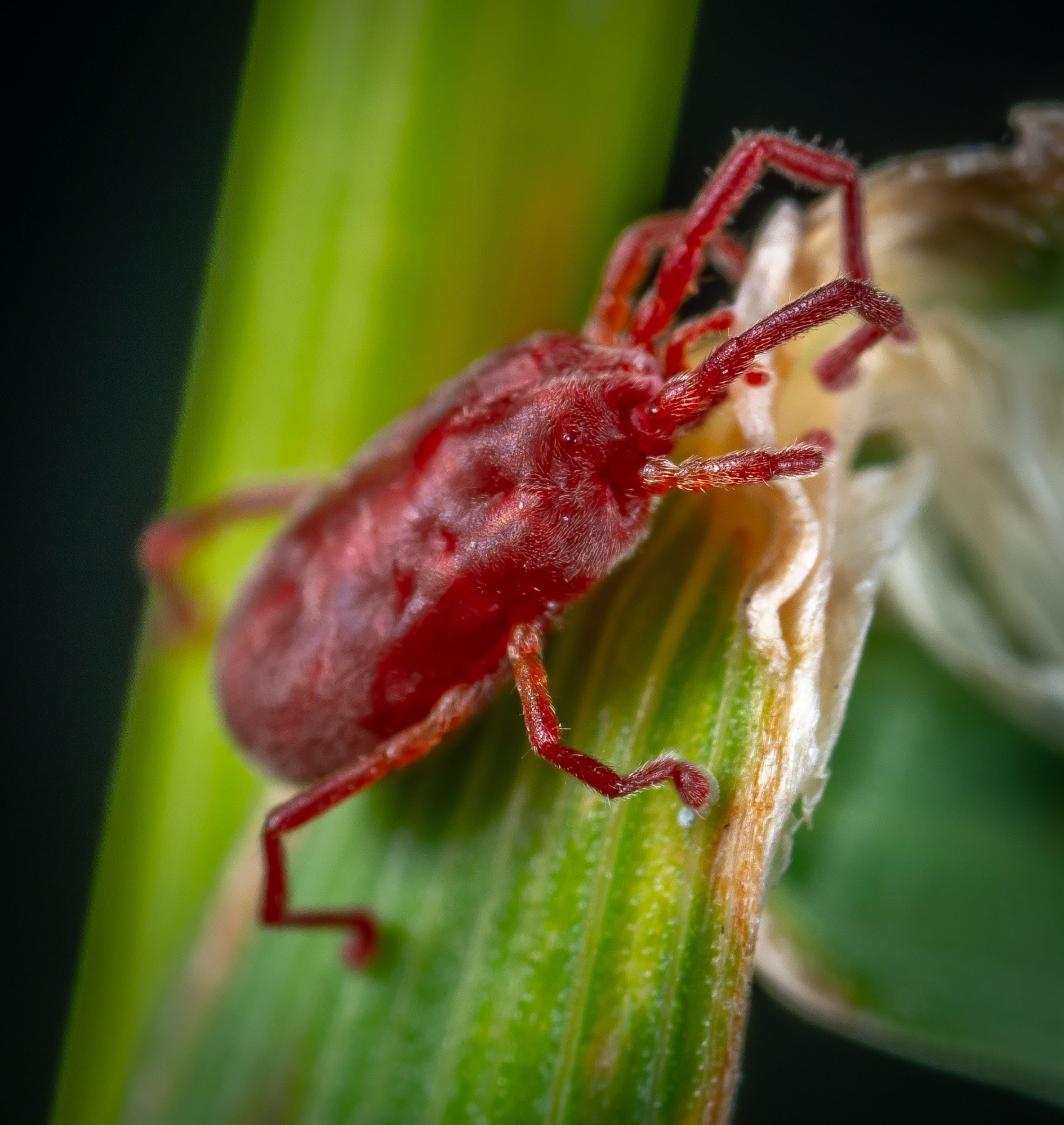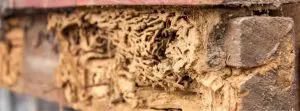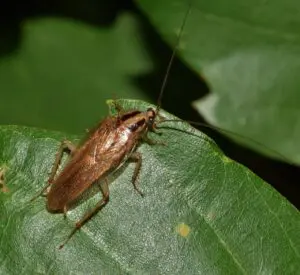

Fall weather is quickly approaching, and that means cool weather pests are getting ready to emerge, clover mites among them. These tiny red bugs can be quite a nuisance when they move into yards and buildings, so we’ve put together an all-encompassing guide to answer frequently asked questions and give some prevention tips from the pros.
What do clover mites look like?
Clover mites are tiny nuisance pests that invade homes and businesses, both indoors and outdoors. These mites are arachnids, which means they are close relatives of ticks and spiders. Adults have eight legs, and their front pair of legs are much longer than their other six legs, so they often get mistaken for antennae. They are slightly smaller than the head of a pin, typically between 0.75 and 0.85 mm in length. Their bodies are oval in shape and they have feather-like plates on their abdomens. They range in color from bright reddish to reddish brown.
Clover mites are parthenogenetic, which means larvae hatch from unfertilized eggs. In fact, there are no male clover mites- only female. They lay about 70 eggs at a time. Eggs are spherical, about 0.12 mm in diameter, and bright red in color. Each larva that hatches is genetically identical to the mother. Larvae are disc-shaped and only have six legs. They are bright red, salmon, or pink in color. Clover mites go through two nymph stages, which are protonymph and deutonymph. Nymphs, like adults, have eight legs.
Outdoors, a single generation of clover mites will last for about one month. They spend about two weeks as adults. Indoors, clover mites can only survive for a few days before they die of dehydration. Luckily, this means they cannot reproduce indoors.
Because they are so tiny, clover mites look like dark red specks to the naked eye. They appear in large numbers and can be found around walls, siding, doors, windows, curtains, furniture, and more. When they are crushed, they leave a red stain. This sometimes causes home and business owners to think they are being invaded by some sort of blood-sucking creature, but this is not the case. The red stain that is left behind is actually a result of the natural pigmentation of clover mites.
Clover mites and balaustium mites, another species of red mites, are often mistaken for one another. In terms of appearance, at least a 20x hand lens is needed to tell the difference between the two. One important difference is that balaustium mites bite and can cause a rash, while clover mites do not bite or cause any health issues.
Are clover mites dangerous?
No, clover mites are not dangerous. The red stain they leave behind when they are crushed is sometimes mistaken for blood, leading to the false belief that clover mites bite. As stated before, clover mites do not bite, nor do they cause any health issues. They do not damage structures and they do not infest stored products. The red stains they leave are is the full extent of the damage they do to carpets, clothing, and curtains. They can, however, cause extensive damage to lawns, gardens, and house plants, and the damage they cause increases with their population. Clover mite damage on lawns appears as brown spots. Large populations can cause huge areas, even entire lawns, to turn brown. Damage to lawns is often mistaken for winter kill. Feeding damage to leaves and flowers appears as small silver streaks in an irregular pattern. Heavily damaged foliage will turn yellow or brown and wilt.
Where do clover mites live?
Clover mites are distributed all over the world, and they live virtually everywhere in the United States. They lay their eggs in dry, protected areas. These areas need to have enough sun to keep the eggs warm during cool weather, but enough shade to protect them from excessive heat. A popular place for clover mites to lay their eggs is in the cracks and crevices of exterior walls. Clover mites are geotropic, which means they grow downwards in their eggs. Because of this, they either drop or move down from their eggs after hatching. Usually, their egg sites are above some sort of plant, so the newly hatched mites can drop down and begin feeding immediately.
Adult clover mites can be found gathered on their food sources, mostly. They also congregate on the sides of buildings, especially sides that are exposed to the sun. They usually stick to warm areas with a lot of sunlight during cooler weather and shade during warmer weather.
Where do clover mites come from?
Clover mites can be found throughout America, Asia, Africa, Europe, and Australia. If clover mites migrate indoors for any reason, they come from their dry, protected hiding spots and enter homes and businesses through any tiny openings. What do they come inside for? Keep reading to find out.
Why do I have a clover mite problem?
Clover mites may become a problem for a number of reasons. Outdoors, they may invade if the landscape contains a lot of their favorite foods. Clover mites feed on various types of grasses and plants, and are particularly fond of heavily fertilized lawns. Other plants they gravitate towards are alyssum, clover, daffodil, dandelion, primrose, shepherd’s purse, strawberry, and various ornamental flowers.
There are several conditions that will cause a clover mite population to migrate indoors. One such condition is heavy rain. While they do need a decent amount of moisture, clover mites cannot survive when there is too much water. Another condition is temperature. Clover mites require a very moderate temperature, so when the weather outside becomes too hot or too cold, they are forced to find either a cooler or warmer area. Unfortunately, they usually find the temperature they’re looking for inside homes and businesses. In the spring, all of their favorite foods start growing. If those foods are close to the perimeter of a home or business, they tend to end up wandering indoors, causing springtime invasions. They may also move indoors if their outdoor food sources are removed or die, which is usually the cause of autumn invasions.
When are clover mites active?
Clover mites thrive in somewhat moderate temperatures. They cannot survive in temperatures above 102℉, and temperatures below 75℉ cause eggs to go into dormancy. As such, they are most active during the spring and fall months and are usually inactive during the summer and winter months. Eggs are usually laid at near the end of fall and stay dormant until spring arrives. The eggs hatch when the weather is warm enough, and the newly hatched generation matures and reproduces until summer. They typically aestivate or enter a state of dormancy due to hot or dry weather, during the summer months. They then become active again when fall weather arrives. For instance, in the northeastern states, they may enter the aestivation period in May and remain dormant until September. During cooler summers, though, they may skip the aestivation period altogether.
Clover mite invasions happen most often during spring, but they may occur during the fall as well. In northern states, invasions are also possible during cool summers. In southern states, like Florida, they are possible during warmer winters.
How can I prevent a clover mite infestation?
When it comes to clover mites, prevention is key. We put together some tips for keeping clover mites off of your property, so you can hopefully avoid an infestation all together.
Make Your Yard Uninhabitable
Clover mites gravitate towards yards with favorable living conditions. To keep them from even coming near your yard, there are a few important steps to take. Most importantly, avoid over-fertilizing your lawn and garden, or use a fertilizer that repels clover mites. Landscape with plants and shrubs that clover mites avoid, such as barberry, chrysanthemum, geranium, juniper, marigold, petunia, rose, yew, and zinnia. Leaf litter should be cleaned up regularly, especially in areas around windows and doors. Providing supplemental watering to areas where eggs may be can also help to reduce explosions in populations. Some such areas are dry, sun exposed walls and around evergreen trees.
Create a Perimeter
When trying to prevent clover mites from entering your home or business, creating a perimeter is definitely a good idea. Create a plant-free border by keeping all vegetation at least 18 to 24 inches away from the foundation and outer walls. If possible, remove any grass and weeds from that border as well, and replace it with loose soil or gravel. It is important to be especially vigilant with these methods on the south and southwest sides of a building, as they get the most sun exposure and are therefore attractive to clover mites.
Fix Cracks and Gaps
Clover mites are extremely tiny, so they can enter homes and businesses through virtually any crack or gap. As such, it is important to fix any cracks in the foundation and outer walls. Gaps around windows and doors should also be sealed. Be sure to use tight-fitting window screens, and replace any damaged weather stripping.
Dispose of Them Properly
If clover mites do find their way into your home or business, it is best not to squish them. Vacuums are a great method for removal. To avoid further problems, though, the vacuum bag should immediately be burned or disposed of in a safe area far away from any buildings. A wet sponge can also be used in crevices where a vacuum won’t reach. When using either of these methods. Be careful not to squish the mites, as they will leave stains.
If you find you still have questions about clover mites, or if you think you have a clover mite problem around your home or business and need help to get rid of clover mites, our professional pest control team is here to help! Call our experts at Excel today.
If you find you still have questions about clover mites, or if you think you have a clover mite problem around your home or business and need help to get rid of clover mites, our professional pest control team is here to help with both residential pest control and commercial pest control services. Call our experts at Excel today to discuss your specific needs and ensure a pest-free environment in both your home and business spaces.






